Methods
Sample preparation: Avermectin (containing 96% avermectin B1a and 4% avermectin B1b), bifenthrin, cyfluthrin, cypermethrin, deltamethrin, fenvalerat, λ-cyhalothrin, milbemectin A3 and A4 and permethrin were diluted into mobile phase A for analysis. Calibration curves were constructed in mobile phase A by spiking in compounds at concentrations of 0.02–20 ng/mL.
Organic green tea (1 g) was milled to a fine powder, homogenized and added to 10 mL of water and 10 mL of acetonitrile. For the spices (organic paprika powder), a starting mass of 2 g was used. The sample was shaken for 1 min and added to Macherey-Nagel QuEChERS Mix I (ref 730970). The sample was shaken for another 3 min and centrifuged for 5 min. Next, 8 mL of the organic (upper) phase was added to Macherey-Nagel QuEChERS Mix III (ref 730648). The sample was shaken for 3 min, centrifuged for 5 min and 7 mL was then taken and acidified with 5% formic acid in acetonitrile (10 µL per 1 mL of sample taken). Compounds were spiked into the tea extract at 1 ng/mL and 10 ng/mL, corresponding to 10 ppb and 100 ppb in the original tea and 5 ppb and 50 ppb in the original spice sample. Samples were analyzed on the SCIEX 7500 system without further dilution.
Chromatography: Chromatographic separation was performed using the ExionLC AD system and a Phenomenex Synergi Fusion-RP (4 µm, 50 x 2.1 mm) column at a flow rate of 0.25 mL/min. Mobile phase A was 5 mM ammonium formate in 20% methanol and 80% water (v/v); mobile phase B was 5 mM ammonium formate in 90% methanol and 10% water (v/v). A gradient of 0–100% mobile phase B over 8 min was used. The total analysis time was 17 min, using either a 2 µL or 5 µL injection volume. The column temperature was 40°C.
Mass spectrometry: Multiple reaction monitoring (MRM) analysis was performed using a SCIEX 7500 system. The system was operated in positive electrospray ionization (ESI) mode using the OptiFlow Pro ion source. Data was acquired using SCIEX OS software. Source conditions, which were optimized using the guided optimization tool in SCIEX OS software, were ISV 3500 V, GS1 40, GS2 70, TEM 250ºC and CUR 50.
Data processing: Data was processed using SCIEX OS software.
Method development and optimization
An MRM method was first developed and optimized on the SCIEX Triple Quad 5500 system and targeted more than 500 pesticides and their metabolites. Eleven of the most challenging compounds from the multi-component method were selected for evaluation on the SCIEX 7500 system, and the method was adapted. Using the guided optimization tool in SCIEX OS software, collision energies were re-optimized for the SCIEX 7500 system. Source conditions were also optimized using the guided optimization tool in SCIEX OS software.
Additional declustering of ions can be achieved on the SCIEX 7500 system by using a voltage differential applied either between the QJet ion guide and IQ0 lens (Q0 dissociation, Q0D simple) or between the IQ0 lens and Q0 rods (Q0D enhanced), illustrated in Figure 2. Q0D is useful for breaking up clusters, decreasing interferences and increasing signal to noise in some cases. Q0D was optimized for a subset of the analytes that were the most difficult to detect in green tea and spices. MRM extracted ion chromatograms (XICs) for milbemectin A3 in spices that were acquired using both default settings and optimized Q0D enhanced settings are shown in Figure 3. In this case, a signal to noise increase of 3.5-fold was observed after optimization of Q0D.
The final MRM assay comprised 1 MRM transition per compound. Separation of target compounds is shown in Figure 4.
Dilution series in solvent
The optimized MRM assay was applied to the analysis of a dilution series of target compounds in mobile phase A. Standards were prepared in the range 0.01–20 ng/mL; 5 µL sample was injected per analysis. Each sample was analyzed 3 times. Examples of calibration curves and MRM XICs from the low end of the dilution series for 3 compounds are shown in Figure 5. LLOQs and associated statistics for all compounds are shown in Table 1.
Compounds spiked into spices and green tea
Compounds were next spiked into QuEChERS extracts of spices and green tea at 1 ng/mL and 10 ng/mL, corresponding to 5 ppb and 50 ppb in spices and 10 ppb and 100 ppb in tea. Quantification of target compounds in matrix against the dilution series in solvent was performed using both 2 µL and 5 µL injection volumes to assess the effect of lowering the injection volume on matrix ion suppression. It was found that the reduction in ion suppression observed for a 2 µL injection compared with a 5 µL injection mostly compensated for the reduction in injection volume to the extent that the sensitivity of the assay was not significantly impacted (Table 2 and Figure 6). Figure 7 demonstrates the background signal and ion suppression observed with a 2 µL injection volume; however, the level of ion suppression was much less than the ion suppression observed with higher volume injections (Figure 6).
It is noted that for bifenthrin, an unexpected increase in signal was observed in the QuEChERS spiked samples compared with the dilution series in solvent. The source of this anomalous result is unknown and requires further investigation. See Table 3 and Table 4 for a summary of each compound’s ion suppression results and concentrations of detection (mean calculated concentration) in the matrices analyzed.
Conclusions
To summarize, the SCIEX 7500 system provides impressive levels of sensitivity, robustness and accuracy for trace quantification of insecticides in food matrices. In this study, excellent sensitivity has been demonstrated with LLOQ values down to 0.02 ng/mL. Quantification of pyrethroids and macrocyclic lactones in both green tea and spices has also been shown. By using a higher sensitivity LC-MS platform, injection volumes could be reduced, lowering ion suppression without impacting the overall assay sensitivity. The reduced amount of matrix injected for large studies can help to improve total system uptime.
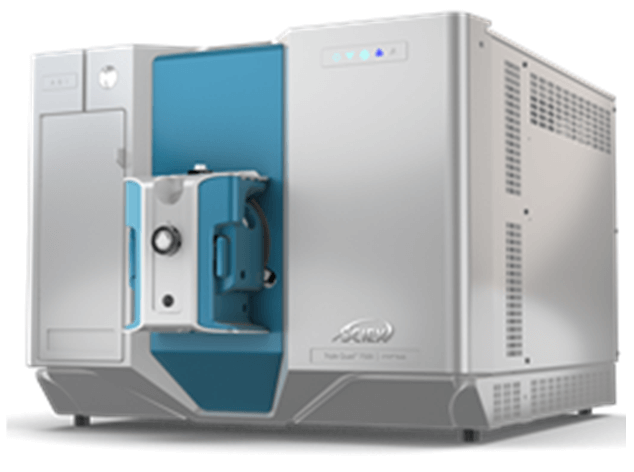
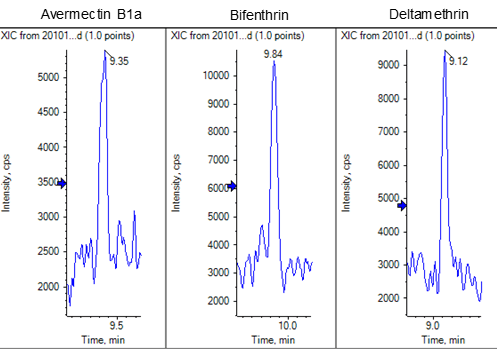 Click to enlarge
Click to enlarge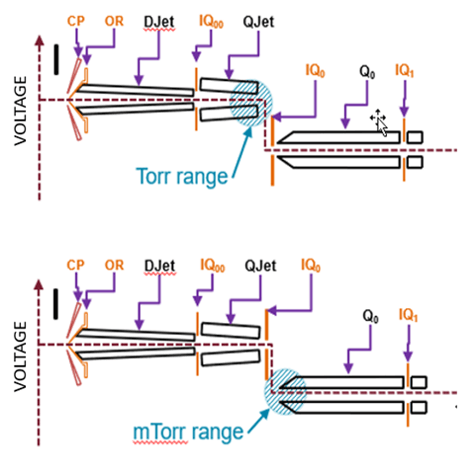 Click to enlarge
Click to enlarge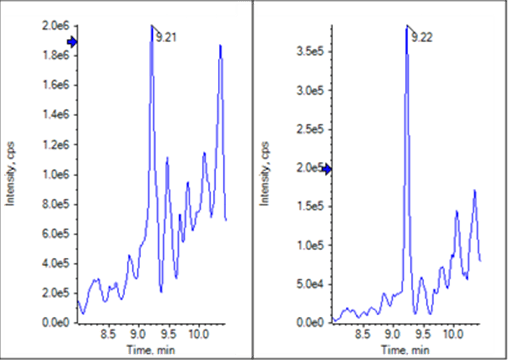 Click to enlarge
Click to enlarge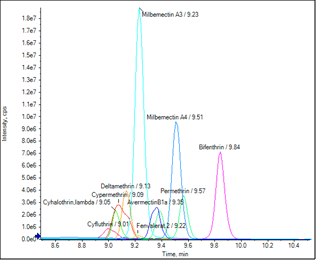 Click to enlarge
Click to enlarge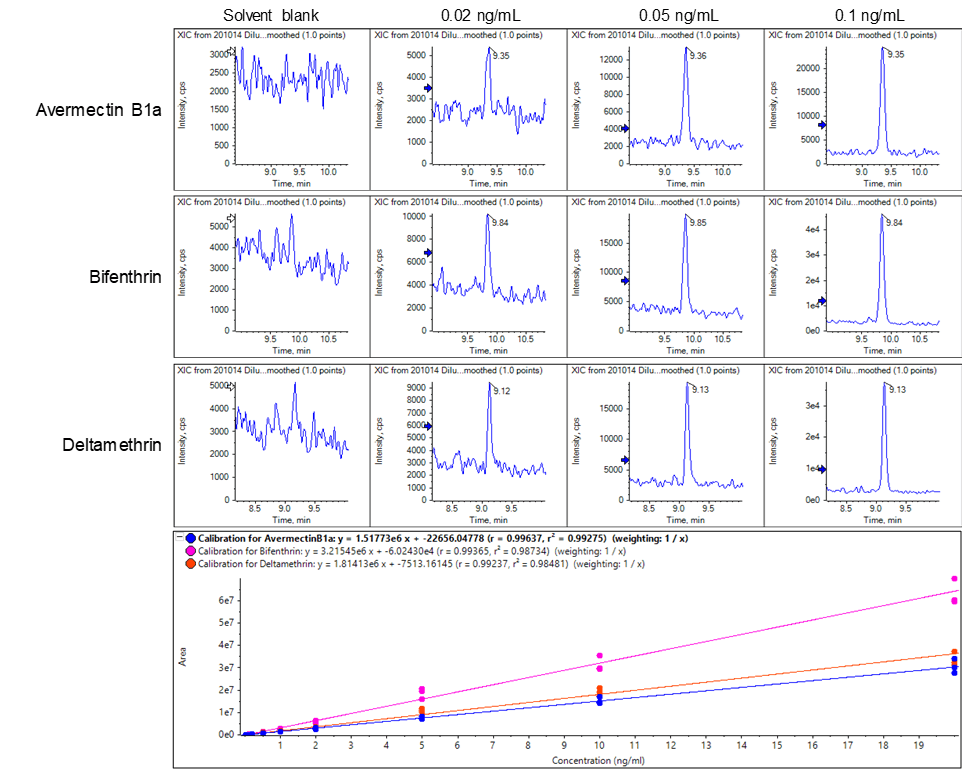 Click to enlarge
Click to enlarge Click to enlarge
Click to enlarge Click to enlarge
Click to enlarge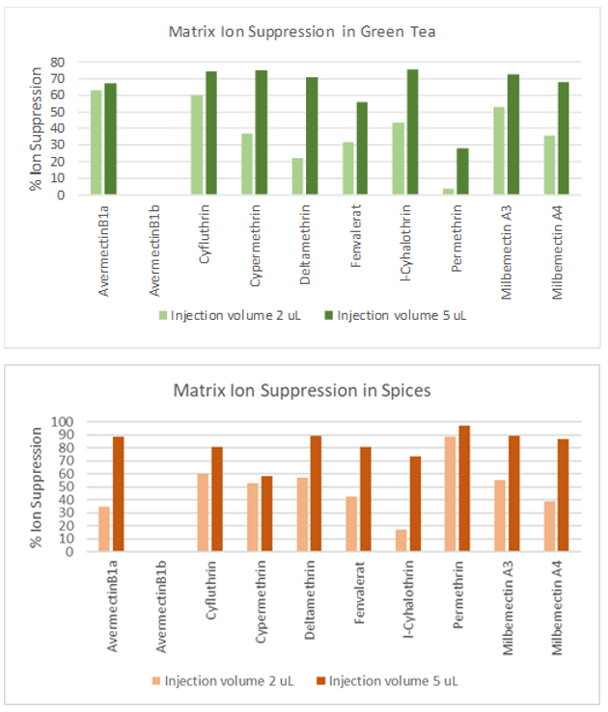 Click to enlarge
Click to enlarge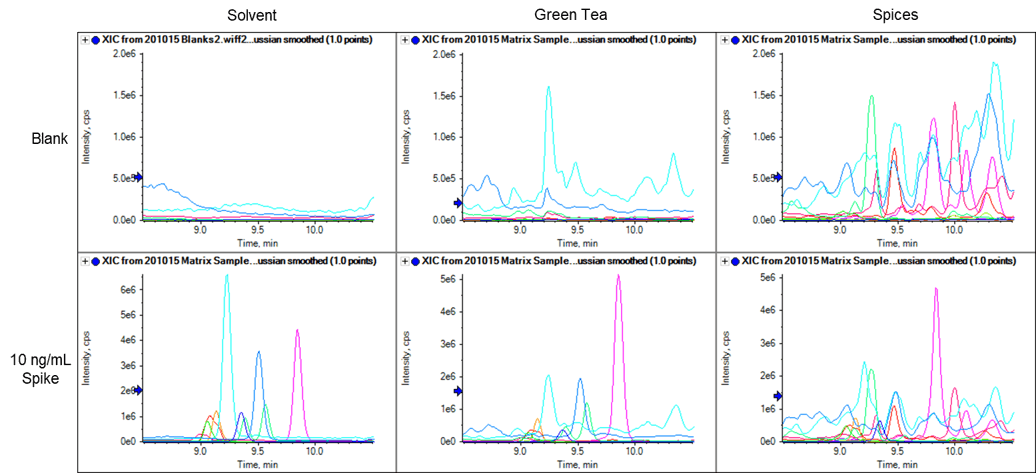 Click to enlarge
Click to enlarge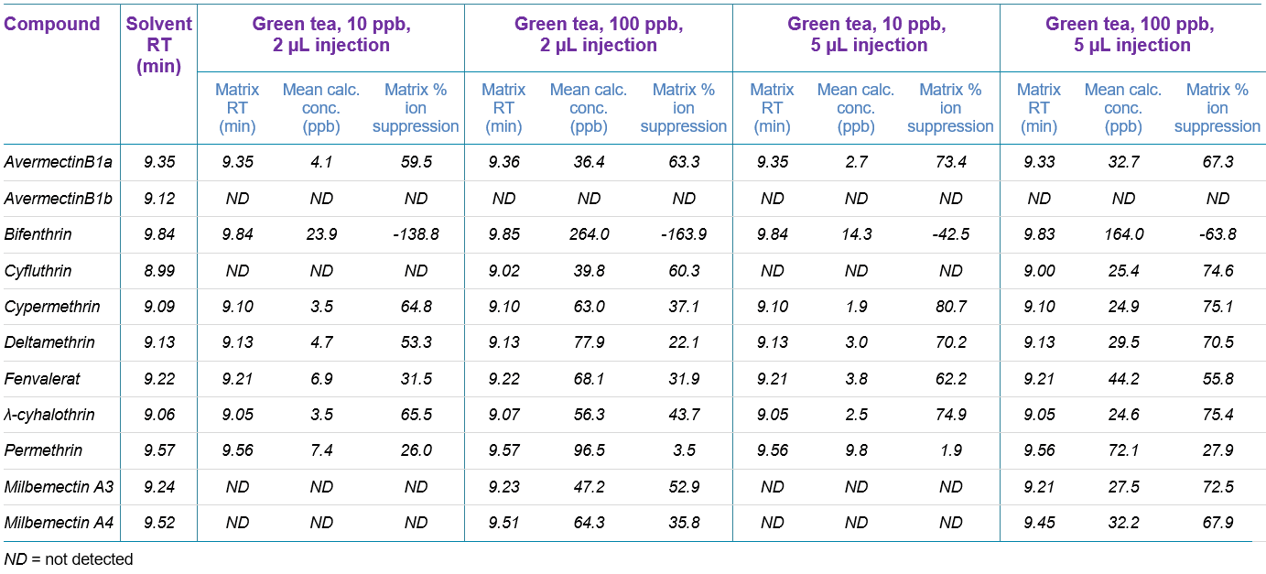 Click to enlarge
Click to enlarge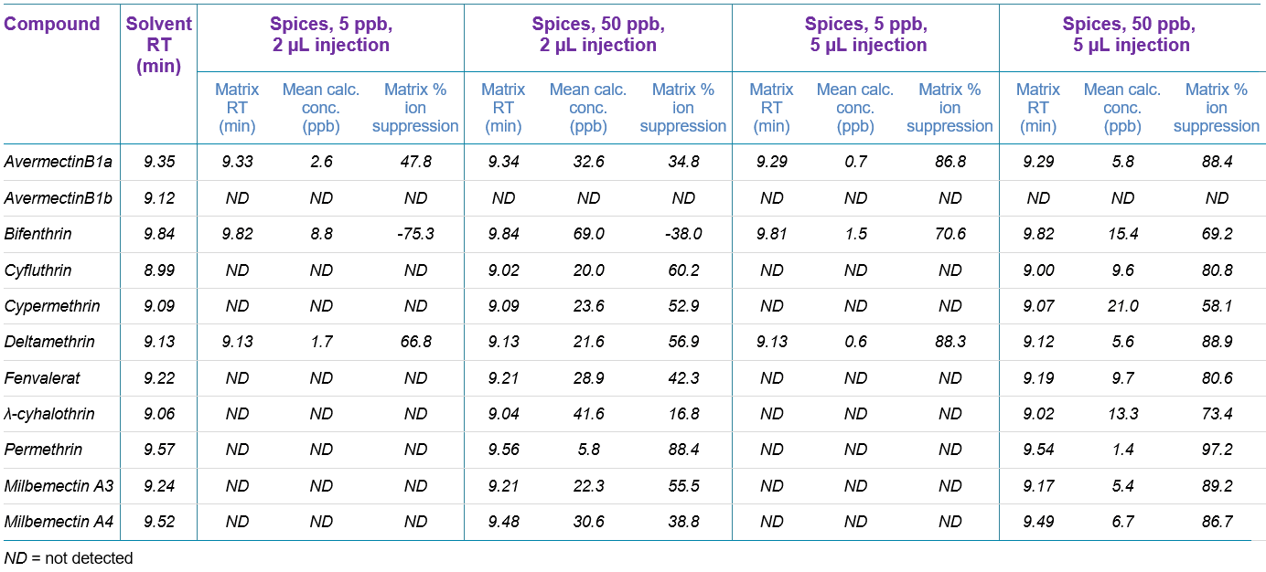 Click to enlarge
Click to enlarge